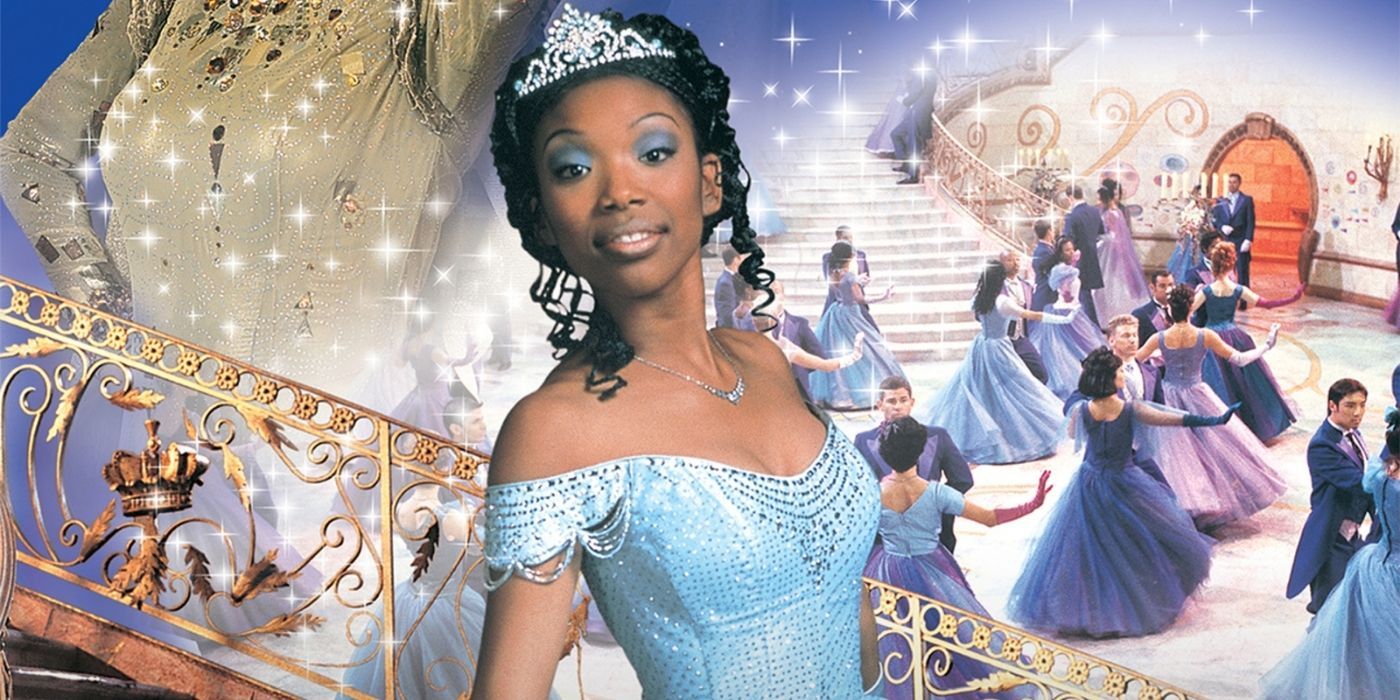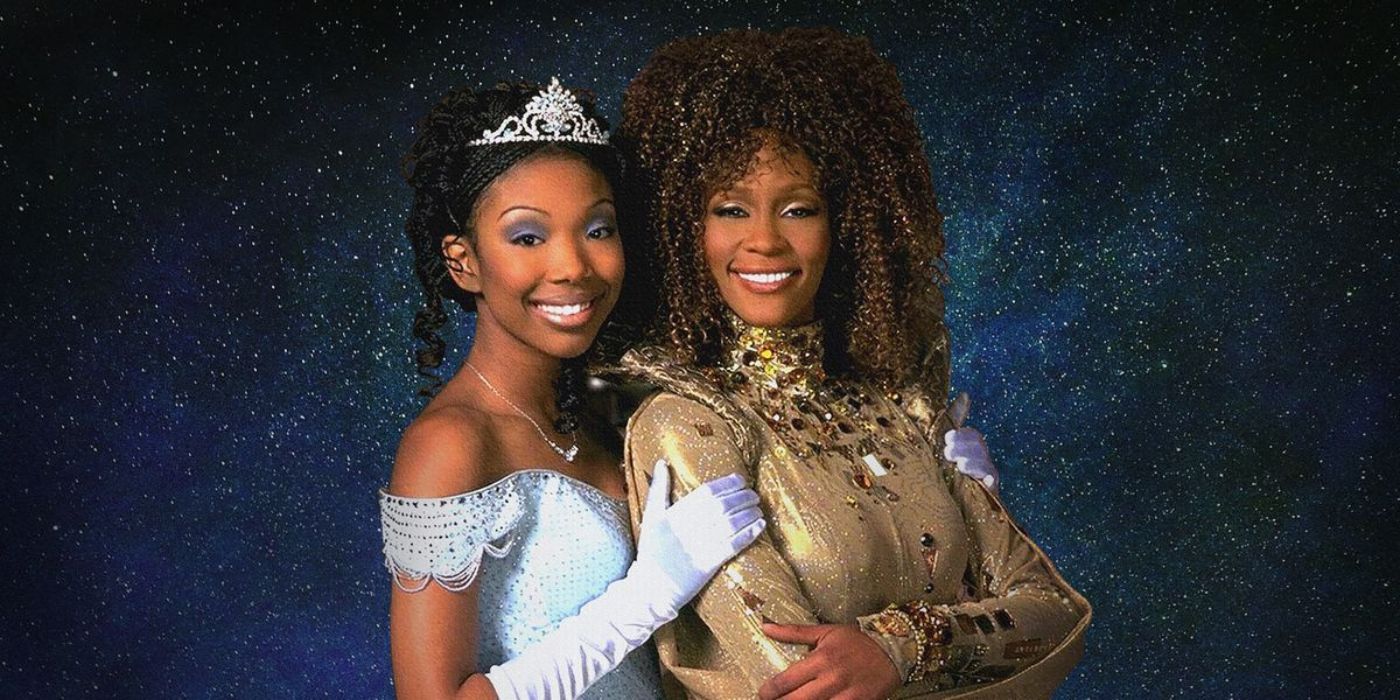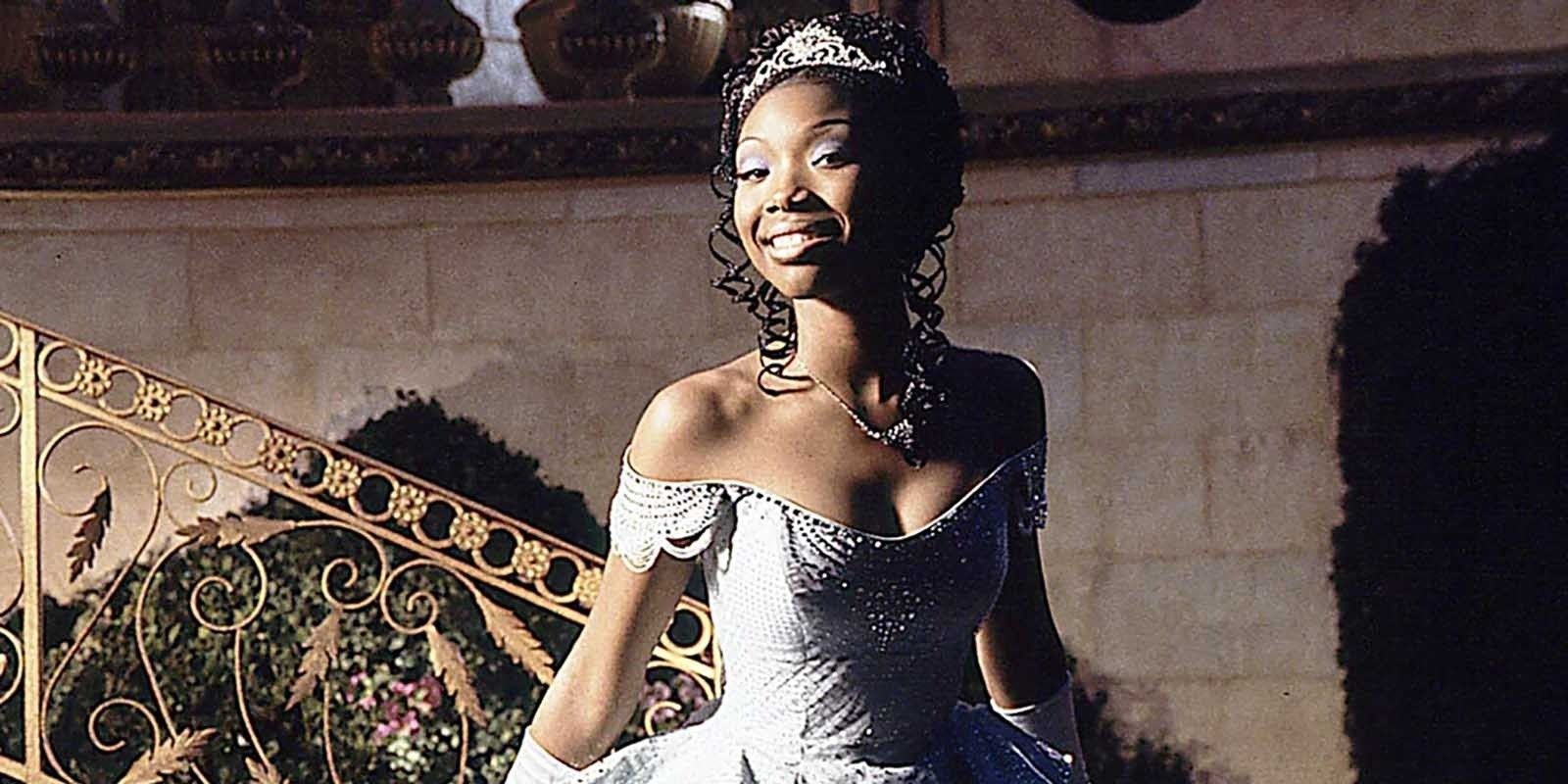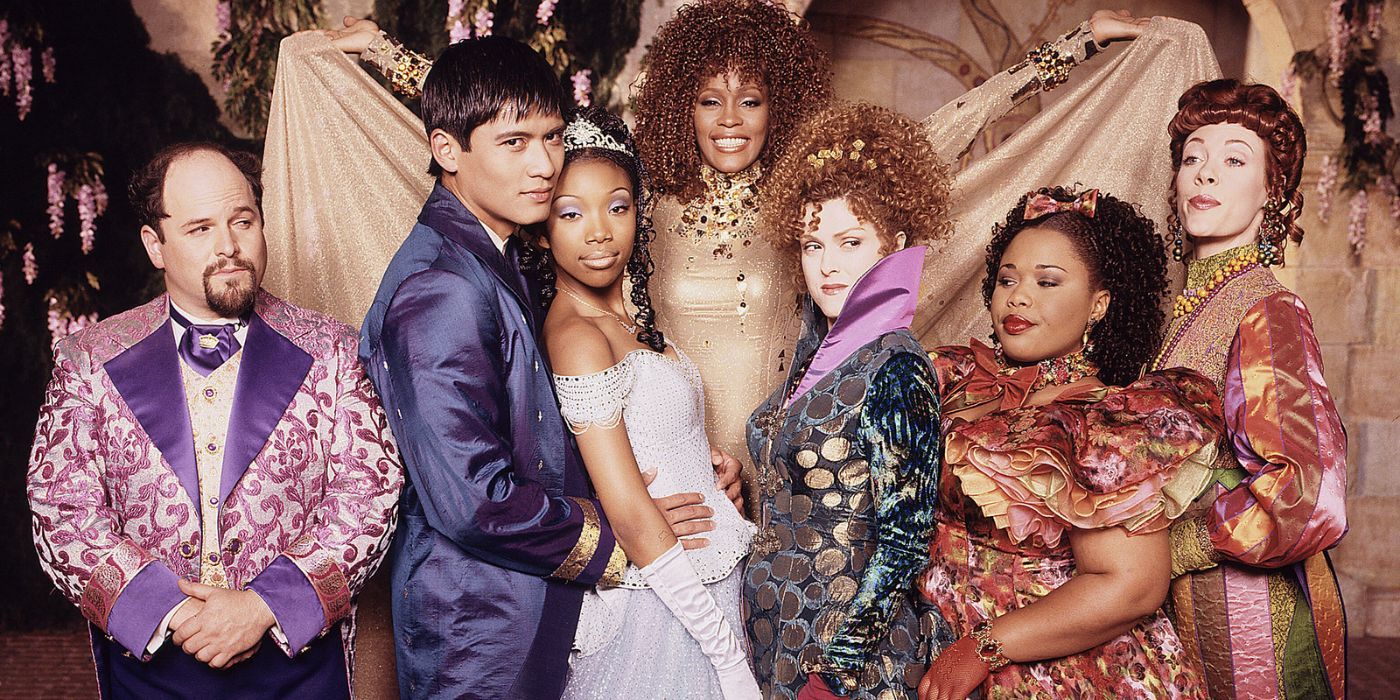This year marks the 25th anniversary of Rodgers & Hammerstein's Cinderella. Even after being retold time and time again, this particular 1997 version remains a fan favorite. Having a quality that goes above what other adaptions have failed to capture, it can be argued that Cinderella 1997 stands the test of time.
So why does this version of Cinderella hold up? There are a lot of reasons that extend beyond just the construction of the movie itself. Although some may say it's due to the production value, being the most expensive TV-made movie of its time, there are far more fundamental reasons.
From Whitney Houston to Brandy, Cinderella's Cast Brought Their A-Game
The cast represents their characters well and is diverse, presenting a front against prejudice. Cinderella adaptations have often featured the classic white male and female lead. This version diversifies, bringing together not only white actors but also Asian, Black, and many others.
Whitney Houston's fairy godmother really helps open and close the film with captivation. Bernadette Peters reflects her role as stepmother so well that some might think she wasn't acting. Whoopi Goldberg and Victor Garber perfectly embody their roles as queen and king, switching between parents and rulers majestically well. Plus, Goldberg's iconic squeaking is still hilarious. Brandy even gives a fresh feel to the role of Cinderella, adding a different outlook to a character that is often portrayed as defenseless and mistreated.
Cinderella Is a Visual Feast
Visuals also play a part in how Cinderella is brought together. The attention is brought straight to the screen by Houston in a sparkling golden stream. She wrapped up several scenes this way, so viewers didn't feel like there was a drop-off. In a sense of design for both costumes and details in objects like the carriage, the visuals also helped create a fairy tale feeling. The ending credits were also done well, letting viewers enjoy the end instead of the constant clutter that usually comes with it.
Cinderella's Script and Music Modernized the Classic Tale
The script features some refreshing characteristics, offering humor in tense scenes to lighten the mood. Some examples would be when Cinderella inadvertently insults her stepsisters, saying it doesn't suit either of them after they both try on the same hat. Another scene introduces the butler (Jason Alexander) when the prince returns to the castle, saying it was good to be among real people. He tells the prince that real people aren't what they are all cracked up to be: "Look at me, I'm a real person. Does that tell you anything?" Another sick burn shows just how repulsed the butler is by the stepmother when she tries to flirt with him, and the butler replies he does wish there was something between them: "a continent."
Rodgers & Hammerstein's music is classic but updated for a new era, not coming off as repetitive and old. In fact, the orchestra beautifully highlights certain segments in the film that trigger feelings an audience sees in the character itself, like excitement or uncertainty. The shift between musical scenes is effortless in a way where it doesn't feel too overplayed. The dance sequences are fantastically choreographed, offering intricate and well-balanced scenes. This is especially so in the marketplace scene and the ball. The marketplace scene has so many things going on that one would wonder how they managed not to trip up. Likewise, the ballroom dance sequence is so immaculate that the dancers almost look like they're mechanical.
One of the most amazing aspects of 1997's Cinderella is the life lessons and knowledge added to the story itself. In the beginning, it focuses on the fact that two people from two different worlds can be near each other and may or may not ever meet, introducing the belief in fate/destiny. The butler portrays the madness of his job, showing just how chaotic and demanding his position is, emphasizing the burden in workplace environments. Even Cinderella's reactions to her stepmother and sisters reflect how needlessly throwing responsibility onto others is not okay. Although the 'dream big' theme is still in play, the thought is reinforced by Cinderella and her fairy godmother's words: it's okay to be comfortable, but one should do something about their dreams instead of just wishing for them to come true. Other adaptations have not offered such details or extremely well-crafted scenes in one big package as well as this Cinderella does, explaining why this film can still reach its audience 25 years later.




